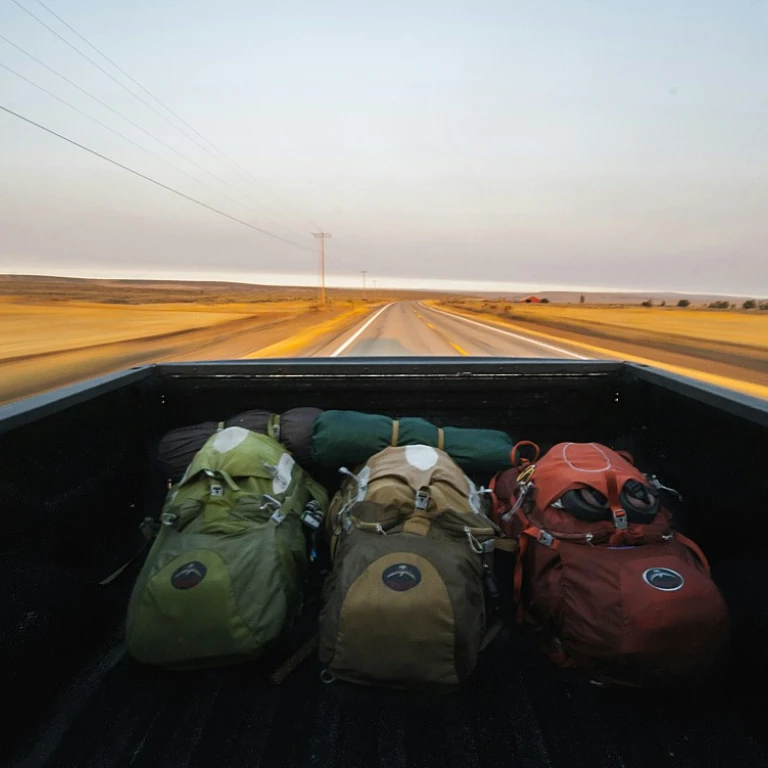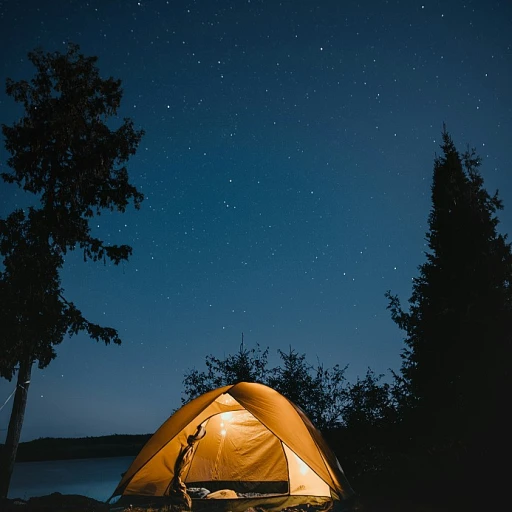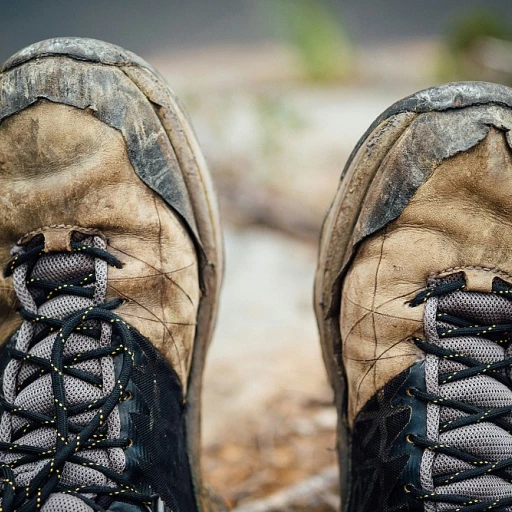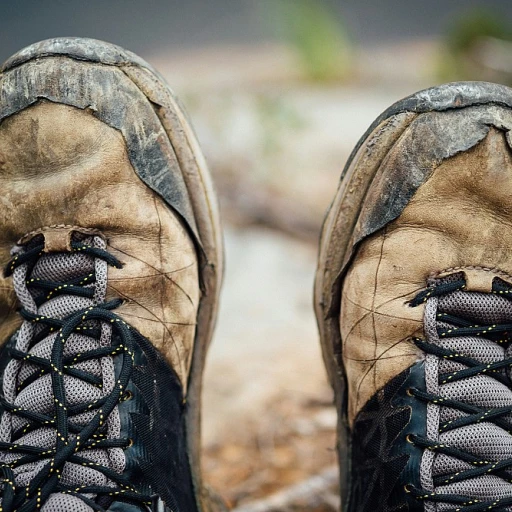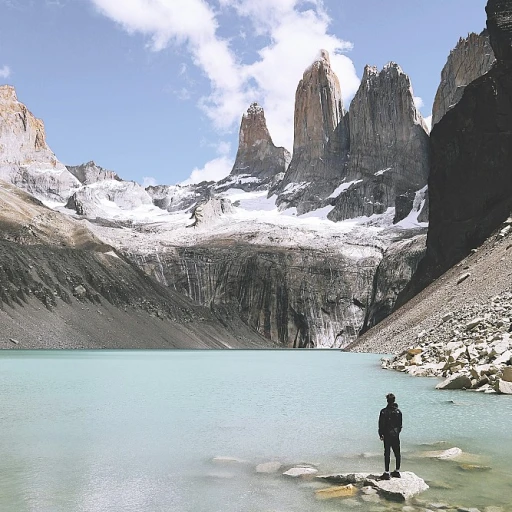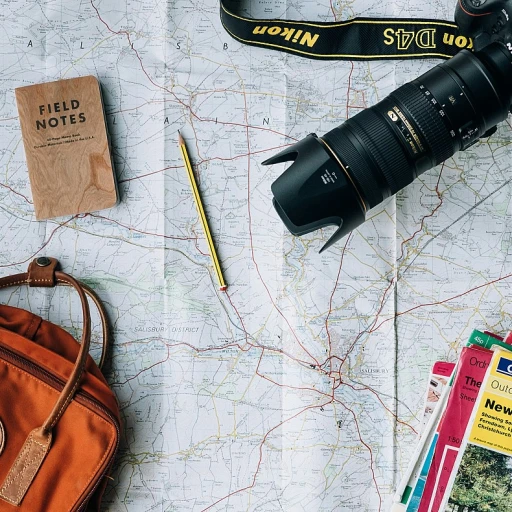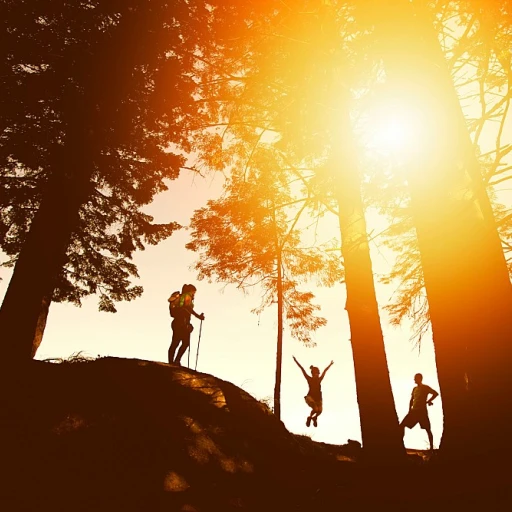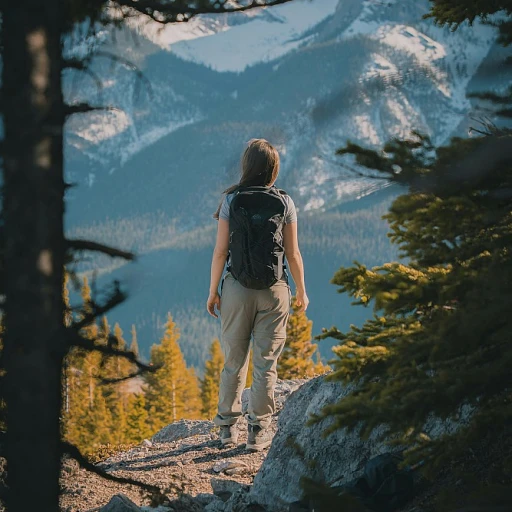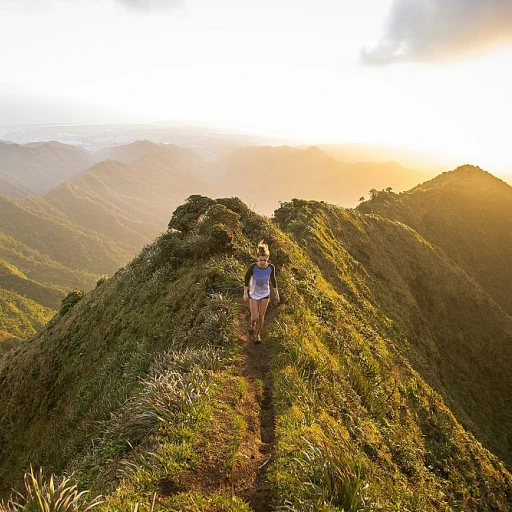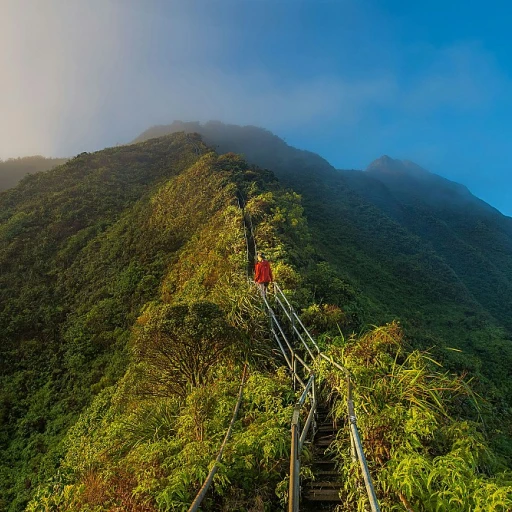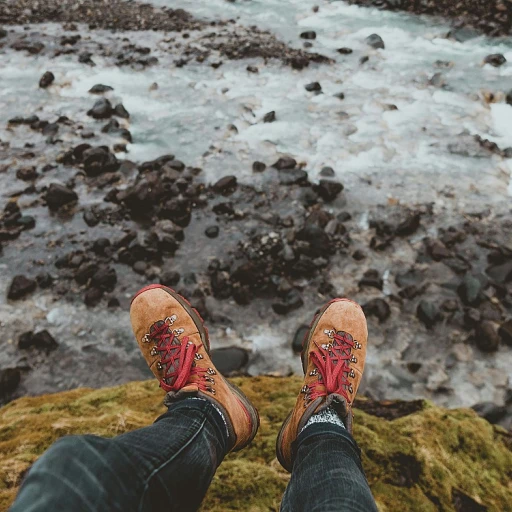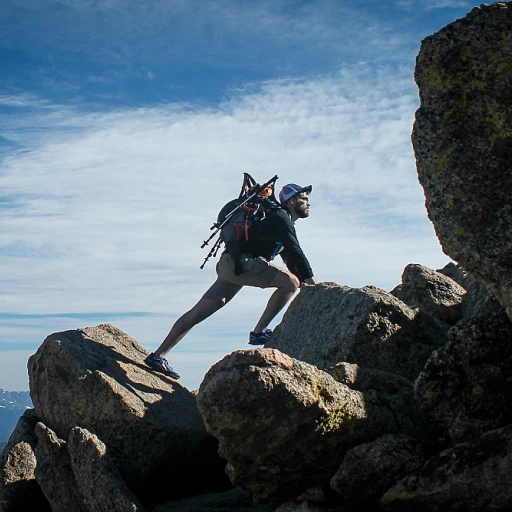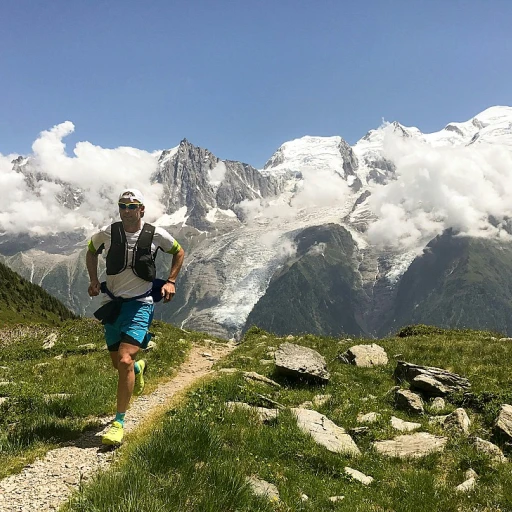
Planning your backpacking trip
Choosing your destination and timing
Backpacking trips start with picking the right destination. Whether it's the Lost Coast in California or the challenging elevations of the Himalaya, your choice will shape your entire experience. According to the National Park Service, some of the most popular destinations include the Zion National Park in Utah and Italy's Cinque Terre for their stunning trails and breathtaking views.
Timing your trip is just as important. Each season offers a different backpacking experience. In spring and fall, mild temperatures make for pleasant adventures, but unpredictable weather can be a challenge. Summer provides longer days, but high temperatures and crowded trails can dampen the excitement. Winter hikers enjoy solitude and beautiful snowy landscapes, but must be prepared for harsh conditions.
Setting your goals and expectations
Before hitting the trail, it’s crucial to establish your backpacking goals and manage expectations. Are you seeking solitude, testing your limits, or simply looking for a leisurely nature walk? Answering these questions guides you in planning a backpacking trip that matches your experience level and interests. A study by Public Health Research and Practice indicates that clearly defined goals enhance the overall outdoor experience.
Researching permits and regulations
Different backpacking locales have varied regulations. National parks like Zion require permits for overnight stays, and some trails even mandate specific guidelines for the number of hikers. The National Park Service website offers comprehensive resources to help you understand these regulations. Ignoring these rules can not only ruin your trip but also result in hefty fines.
Mapping out your route
Navigation is a cornerstone of a successful backpacking adventure. Topographic maps and GPS devices are indispensable tools. Websites like The Ultimate Guide to Choosing a Bear Canister for Your Hikes provide detailed route maps and can help you identify important landmarks along your trail. Remember, always leave a copy of your planned route with someone you trust before your departure.
Preparing for the unexpected
Even the best-laid plans can go awry. Be prepared for sudden weather changes, injuries, or getting lost. Carry an emergency kit, sufficient water, and a means of communication. According to a report by the Appalachian Mountain Club, unexpected circumstances are one of the leading reasons for rescues in the wild. The Leave No Trace principles, discussed further in other parts of this article, also provide guidelines on staying safe.
Essential backpacking gear
Investing in high-quality gear can save the trip
An essential for backpacking is picking out the right stuff. Choosing the best gear isn't about grabbing the priciest items off the shelf—but rather about getting what's durable, light, and functional. According to REI, up to 30% of hikers face gear-related issues. That's a big chunk of people unhappy about their setups.
Backpacks: central to your hiking success
A backpack that fits well can make or break your trip. Experts like Andrew Skurka recommend testing backpacks with weights similar to what you'll be carrying. Fun fact? The average filled pack weighs between 30-50 pounds, depending on trip length. Whether you're looking at brands like Osprey or Gregory, invest time in finding the perfect fit.
Sleeping gear: a good night's rest is key
No one wants to wake up cranky on the trail. Sleeping bags and pads are crucial. Choices like the Therm-a-Rest NeoAir Xlite or the REI Co-op Magma 15 are popular for a reason—they offer warmth and comfort without too much bulk. The National Park Service reccommend sleeping bags rated at least 10°F lower than expected night temperatures to ensure warmth.
Clothing: what's on the outside matters
Your clothing isn’t just about fashion; it's got to protect you from the elements. Layering is a tried-and-true method. Pack moisture-wicking base layers, insulating layers like fleece, and waterproof outer layers. Don’t forget a long sleeve shirt and rain gear, even if the forecast looks clear. Always be prepared for rapid weather changes.
Footwear: your feet will thank you
Backpacking can turn painful fast if your shoes aren't up to the task. Blisters are among top complaints by backpackers according to a study by Backpacker Magazine. Choose boots that offer support and have been broken in before your big trip. Waterproof options can also save your feet and sanity in wet conditions.
Packing smart and light
Selecting the right backpacking pack
Choosing the right backpacking pack is crucial because it will be your main companion throughout the trip. According to REI, it's essential to find a pack that fits well, is comfortable, and can carry all your gear without being too heavy. Packs are designed for different purposes, so a day hike pack won't cut it for a multi-day hike.
First, consider the capacity of the pack. For a weekend trip (1-3 nights), a 30-50 liter pack should suffice. Longer trips (3-5 nights) may require a 50-70 liter pack. For extended treks exceeding a week, look for packs that offer over 70 liters of capacity.
Weight distribution and comfort
Proper weight distribution is essential for comfort. A well-fitting pack should distribute the weight between your hips and shoulders. The National Park Service recommends that a loaded pack should weigh no more than 20-35% of your body weight.
Adjustable hip belts and shoulder straps are essential for achieving a good fit. High-quality backpacking packs come with various adjustment options, so take the time to fine-tune the fit before embarking on your journey. A fellow hiker named Jacob shared his experience: 'I've used the same pack for years, and ensuring it fits well and is comfortable has made all the difference, especially on long days.'
Layering gear strategically
Packing light doesn't mean leaving essentials behind; it means packing smart. Layering your gear strategically can make your backpack more manageable. Place heavier items, like your food and water supply, close to your back. Lighter items can go at the bottom and on top. This way, you maintain a balanced load, reducing strain while hiking.
Use compression sacks and packing cubes
Compression sacks and packing cubes can help you organize your gear and save space. They are especially useful for packing your sleeping bag, clothes, and other soft items. A 2020 study published in the Journal of Outdoor Recreation and Tourism found that hikers who used packing cubes or similar organizational tools were 25% more efficient in terms of space utilization in their packs compared to those who did not.
The importance of a good night sleep
Your choice of sleeping bag and sleeping pad can significantly affect the quality of your sleep. Choose a sleeping bag that is appropriate for the temperatures you will encounter. Opt for a sleeping pad that provides adequate insulation and comfort. This, in turn, will help you stay energized and reduce fatigue, making your backpacking trip more enjoyable.
Handling food and water on the trail
Smart ways to manage your food on the trail
Backpacking is a game of ounces and calories. Your goal is to bring enough food to sustain your energy while keeping your pack as light as possible. It's a balancing act where every gram counts. According to the National Park Service, the average hiker burns around 500 calories per hour of hiking. This means you'll need calorie-dense food without adding too much weight to your load.
Pre-packaged meals designed for backpacking, like those from Mountain House and Backpacker's Pantry, provide a good balance of calories and weight. They're lightweight, easy to prepare, and have long shelf lives. As an example, one pack of Mountain House Beef Stroganoff weighs just 4.8 ounces yet provides 650 calories.
Water: Your lifeline on the trail
Water is crucial, but it's undeniably heavy. One liter of water weighs 2.2 pounds. So, you need to be strategic about how you carry and replenish your water supply. Many experienced backpackers use a combination of hydration systems and portable water filters.
According to a study published in the journal Wilderness & Environmental Medicine, dehydration can significantly impair cognitive function and increase the risk of accidents. This highlights the importance of staying adequately hydrated. Portable water filters like the Sawyer Mini and the LifeStraw are popular choices among backpackers, allowing you to safely drink from streams and lakes.
Strategies for managing food waste
Minimizing food waste is essential for lightening your load and adhering to Leave No Trace principles. Plan your meals meticulously. A resource like the REI Co-op's meal planning tool can help you calculate the exact amount of food you'll need for your trip.
Expert backpacker Andrew Skurka suggests packing foods that have minimal packaging and can be consumed entirely, such as trail mix, jerky, and dehydrated fruits. According to Skurka, "The less waste you have to pack out, the lighter and simpler your trek will be."
Dealing with food storage
Proper food storage is essential not only for your safety but also for preserving the natural habitats you're exploring. In bear country, using a bear canister is not just a suggestion; it's often a requirement. The National Park Service advises that bear canisters are mandatory in many parks with high bear activity, such as Yosemite and Sequoia.
In areas without bears, a hanging bear bag system can be effective. Ensure your bag is at least 12 feet off the ground and 6 feet away from tree trunks or branches, as recommended by the National Park Service.
Following the Leave No Trace principles
Pack it in, pack it out: understanding Leave No Trace
When you're out there on the trail, basking in the beauty of nature, it's crucial to remember that we have a responsibility to the environment. The Leave No Trace principles aren't just some fancy guidelines—they're essential to keeping our camping and backpacking spots pristine for the next adventurers.
Know before you go
Did you know that more than 90% of people who go on a backpacking trip might not be fully aware of the impact they can leave on the environment? The Leave No Trace Center for Outdoor Ethics shares that education is the key. Before heading out, take the time to learn about the specific regulations of the region you’re heading into, especially if it's a national park like Zion in Utah. You'll want to know what's allowed and what isn't.
Leave what you find
According to National Park Service, this principle is all about respecting the natural environment. It means no taking souvenirs from your national park adventures. As tempting as it might be to pocket a unique rock or a beautiful flower, the beauty of these trails belongs to everyone. Keeping them intact ensures that future visitors will have the same awesome experiences you did.
Minimal impact camping
Finding the right spot to set up your tent is important. Look for previously impacted campsites and ensure you're at least 200 feet away from lakes and streams to protect water sources. Also, avoid creating new fire pits; use portable stoves or existing fire rings. This minimizes your footprint and protects local flora.
Dispose of waste properly
One of the toughest aspects of hiking and camping is managing waste. Whether it's a leftover granola bar wrapper, your toilet paper, or food scraps, pack it out. Double bagging your trash is a good practice to avoid leaks and smells. Research from REI suggests carrying wag bags for human waste particularly in areas without facilities.
Respect wildlife
Encounters with wildlife can be a highlight of any trip, yet it’s essential to admire animals from a distance. Feeding wildlife changes their behavior and diet. For example, studies show that fed animals lose their natural fear of humans, which can pose problems for both the animals and you. Never leave food out—use bear canisters or food hang systems to store it properly.
Being mindful of your surroundings and adopting these practices ensures everyone can enjoy these beautiful places. By following Leave No Trace principles, we're doing our part to keep nature in its purest form.
Staying safe in the wild
Understanding wildlife and how to avoid conflicts
When you’re out backpacking, the last thing you want is a bear rummaging through your food or a snake surprise. Knowing how to coexist with animals and avoid unnecessary confrontations is key. According to the National Park Service, improperly stored food and waste account for most wildlife encounters. Always use bear canisters or hang your food properly to keep it secure (The Ultimate Guide to Choosing a Bear Canister for Your Hikes).
Navigation and staying on the trail
Getting lost can turn a dream trip into a nightmare. A study by the Wilderness Society found that inadequate preparation contributes to almost 60% of wilderness search and rescue missions. Always carry a map, compass, and a GPS device, and know how to use them. Keeping track of landmarks, such as elevation gains and prominent natural features, is crucial. Apps like AllTrails can be incredibly helpful, but don't solely rely on technology, as batteries can die and signals can be weak.
Weather awareness and preparation
Weather can be unpredictable and challenging, from sudden thunderstorms to drastic temperature drops. The National Weather Service states that hypothermia can occur at temperatures as high as 40°F if you’re wet and exposed to wind. Check weather forecasts before and during your trip, pack appropriately (including waterproof gear and a reliable tent), and be prepared to turn back if conditions worsen.
First aid and emergency responses
Minor injuries like blisters or scrapes can happen, but more serious issues are also a possibility. According to the American Hiking Society, knowing basic first aid and CPR is essential. Your pack should always include a well-stocked first aid kit. Companies like REI offer downloadable and printable first aid checklists tailored for backpackers. Learn how to recognize and treat high-altitude sickness, dehydration, and heatstroke, which are common on backpacking trips.
Emergency communication
While cellular service can be spotty, carrying devices like satellite phones or personal locator beacons (PLBs) can be lifesavers. Studies have shown that prompt communication with rescue teams can significantly increase survival rates in emergencies. Inform someone of your travel itinerary and expected return time, and stick to your planned route as much as possible to make it easier for rescue teams to locate you if something goes wrong.
Personal experiences and anecdotes
Veteran backpacker John Muir once said, “In every walk with nature, one receives far more than he seeks.” I remember a time when, on a multi-day hike in Italy's Dolomites, unexpected weather turned a beautiful morning into a chilling experience. Our preparedness with extra layers and weather-proof gear ensured we didn’t end up in a dire situation, all because we had respected and prepared for the unpredictable nature of the wilderness.
Fitness and preparation for backpacking
How to get your body ready for the trail
Backpacking isn't just about having the right gear; it's about having the physical stamina to carry yourself and your pack through challenging terrains. Let’s face it: prepping your body can make or break your adventure. Here’s the lowdown on getting fit for the trail.
Start with cardio: Before you hit the trails, it's crucial to build a solid cardiovascular base. Hiking often involves long hours on foot, sometimes with significant elevation gain. Begin with daily walks, progress to running, or cycling, and then incorporate uphill hikes. Experts suggest aiming for at least 30-45 minutes of cardio exercise, five days a week.
Dr. Emily Smith, a sports medicine specialist, emphasizes, “Cardio exercises not only help build stamina but also improve your heart and lung function, which is essential for high-altitude hikes.”
Strength training: Your legs, core, and back will be doing most of the work. Squats, lunges, and deadlifts are perfect for your legs, while planks and back extensions strengthen your core. Remember, a strong core helps keep you steady on rocky or uneven terrain. According to a study published in the Journal of Strength and Conditioning Research, hikers who engaged in regular strength training were less likely to suffer from injuries compared to those who didn’t.
Flexibility and balance: Incorporating yoga or Pilates into your routine can enhance your flexibility and balance, crucial for navigating tricky passages on the trail. A balanced body is less prone to the typical falls and sprains associated with hiking.
Practice with your pack: Once you've built a reasonable level of fitness, start hiking with your loaded backpack. It helps your muscles get accustomed to the extra weight. Don't forget to practice with a weight similar to what you’ll carry on your actual trips. According to REI, the weight of your backpack should not exceed 20% of your body weight.
Hydration and diet: Getting fit also involves proper nutrition. Susan Carter, a registered dietitian, advises, “Hydrate adequately and eat a balanced diet rich in proteins, carbs, and healthy fats. Your body needs fuel just as much as it needs training.”
Listening to your body: Training is important, but so is rest. Overtraining can lead to injuries, so always listen to your body and allow ample recovery time.
Having a fit body not only makes your backpacking experience more enjoyable but also safer. So lace up those boots and get moving! For more tips on planning your backpacking trip, check out our comprehensive guide.
Top backpacking destinations to explore
Exploring Italy's scenic trails
Italy isn’t just about pasta and art the country boasts some of the best backpacking experiences in Europe. The Dolomites offer incredible limestone peaks and verdant valleys, ideal for both short day hikes and multi-day treks. The Sentiero Azzurro in the Cinque Terre provides a combination of coastal beauty and charming villages. According to a report by the Italian National Tourism Agency, trekking in Italy's national parks and trails grew by 20% in the last five years.
Ventures in New Zealand's backcountry
New Zealand's backcountry offers some of the most ruggedly beautiful landscapes on Earth. Trails such as the Milford Track and the Tongariro Alpine Crossing are legendary in the backpacking community. The New Zealand Department of Conservation emphasizes the importance of being prepared with proper backpacking gear and adhering to the Leave No Trace principles to preserve these pristine environments.
Trekking through the Himalayas
The Himalayas, stretching across five countries, offer unparalleled opportunities for high altitude backpacking. The Annapurna Circuit and Everest Base Camp are classic routes that challenge and reward trekkers with awe-inspiring views. Dr. Pasang Sherpa, a seasoned guide, notes that understanding elevation gain and acclimatization is crucial for a safe and successful journey.
Exploring the trails of Germany
Germany provides a variety of backpacking options ranging from the Black Forest's mystical woods to the Bavarian Alps' soaring peaks. The Romantic Road and the Rennsteig Trail offer less demanding but equally enjoyable experiences. German backpacking culture places a high emphasis on environmental responsibility, with initiatives to minimize camping gear waste.
Hiking through Zion National Park, Utah
Zion National Park in Utah is a paradise for backpackers, with trails like Angels Landing and the Narrows offering unique challenges and stunning views. The National Park Service emphasizes the importance of preparation and packing enough water as the desert conditions can be unforgiving. With over 4.3 million visitors in 2022, Zion highlights the growing trend of national park expeditions in the U.S.
Adventures on the Lost Coast Trail
The Lost Coast Trail in California offers a remote and rugged backpacking experience. The challenging terrain includes beach hiking and camping with no established trails in some sections. California's State Parks recommend a trail-specific backpacking checklist to ensure all necessary items are packed, emphasizing the unpredictable nature of the coastal environment and the need for preparation.

